Is this what modesty means?
Recently a Ghanaian friend wrote to me about the changing standard of decency in West Africa. Two beautiful young women–an actress and a beauty pageant winner–stirred debate among Ghanaians by the way they dressed for a music-awards event. Their dresses, according to some, were “revealing,” “indecent,” “daring,” and a “wardrobe malfunction.”
While such dresses would not have caused a stir in the promiscuous West, they would have created condemnation in the Muslim world. For Ghanaians, a line of decency in their society had been crossed. Should the women apologize? Or should they stand their ground and be even more provocative next time?
In response to my friend’s inquiry, I wrote that, where it comes to feminine beauty, the West knows little beyond sex, sensuality and the ever-increasing pushing of boundaries. On the other hand, radical Islam represents perhaps the polar opposite of the West, a standard of oppression, the almost absurd hiding of women from public view.
One of the greatest concerns of my life has been the misogynist treatment of women around the world. Part of my attempt to advocate for the dignity of women has been the book Nurturing the Nations and the seminar I teach by the same name.
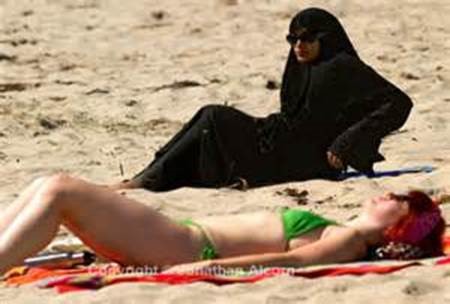 This picture illustrates these two extremes. The burka represents the extreme of the jihadist attempt to cover women. Even the woman’s eyes are hidden behind a mesh. The swimsuit, on the other hand, probably doesn’t capture the full extent of the West’s obsession with skin exposure; a more accurate depiction would be inappropriate.
This picture illustrates these two extremes. The burka represents the extreme of the jihadist attempt to cover women. Even the woman’s eyes are hidden behind a mesh. The swimsuit, on the other hand, probably doesn’t capture the full extent of the West’s obsession with skin exposure; a more accurate depiction would be inappropriate.
Both reflect a male-dominated value system. Women are objectivized, mere sexual objects to be ogled or hidden. On the one hand, “let it all show” to arouse male passion; on the other, hide everything so weak men are not tempted. Strict Muslims believe that a woman’s face and eyes corrupt, so they must be entirely covered. Or to say it differently, the woman is responsible for the corruption of men. Men are weak and have little to no responsibility for their behavior.
 Some hard-core Muslims want the burka mandated as part of sharia law. Strict Muslim societies include the Islamic religious police (مطوع muṭawwi) who are responsible for enforcing Sharia in respect to moral and religious behavior. They monitor such things as the length of men’s beards and the proper covering of women.
Some hard-core Muslims want the burka mandated as part of sharia law. Strict Muslim societies include the Islamic religious police (مطوع muṭawwi) who are responsible for enforcing Sharia in respect to moral and religious behavior. They monitor such things as the length of men’s beards and the proper covering of women.
Both extremes objectify women. Westerners see the excessive covering of women in Muslim countries as barbaric, a sign of male chauvinism. Yet we use scantily clad women to sell products from cars to soap. This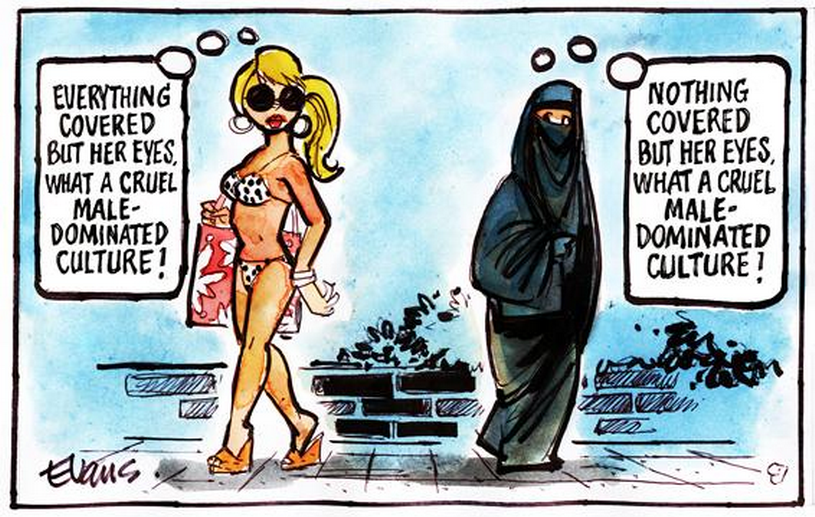 cartoon captures the symmetry of the abuse on both ends of the spectrum. In both cases, it is male chauvinism that promotes these extremes.
cartoon captures the symmetry of the abuse on both ends of the spectrum. In both cases, it is male chauvinism that promotes these extremes.
Here’s a great idea: How about modesty?
The alternative to the burka is not public nudity. Nor is the burka the alternative to public indecency. But there is an alternative to each extreme: modesty.
In females, modesty is “synonymous with chastity, or purity of manners. In this sense, modesty results from purity of mind …. Unaffected modesty is the sweetest charm of female excellence, the richest gem in the diadem of their honor (Webster’s 1828).
Women are not merely so much flesh. Neither the Western approach (How much flesh can we expose?) nor the Islamic (How much flesh must we cover?) has it right. Both have reduced women to mere objects.
Appearance is important. However, a society’s standard of appearance should reflect that God made men and women in His image. Our clothing should reflect this reality and not reduce men and women to mere animals. At the heart of every woman is one profound truth which her apparel may enhance or undermine: she is “imago Dei,” in the image of God. She has a transcendent nature – feminine, that is manifested in her female biological form.
Neither the bikini nor the burka does justice to a woman’s nature. But Christians have an alternative to both extremes. What would characterize a biblical alternative? Modesty in public and, in the privacy of covenantal marriage, the beauty of sexual intimacy.
Clothing can be beautiful and modest!
Our societies should promote modesty, beauty, and femininity. The proper design of women’s attire comes at the nexus of these three. (See God’s Fashion Designers.)
Imagine what clothing might look like that is feminine, beautiful and modest! And what would be the corresponding apparel for men that is masculine, handsome and honoring? Let us be a people that promote modesty.
- Darrow Miller
Editor’s note: Want to read more about the intersection between worldview and the dignity of women? Right now you can order Darrow’s book, Nurturing the Nations: Reclaiming the Dignity of Women for Building Healthy Cultures (InterVarsity Press, 2008) at a 60% discount, while supplies last.

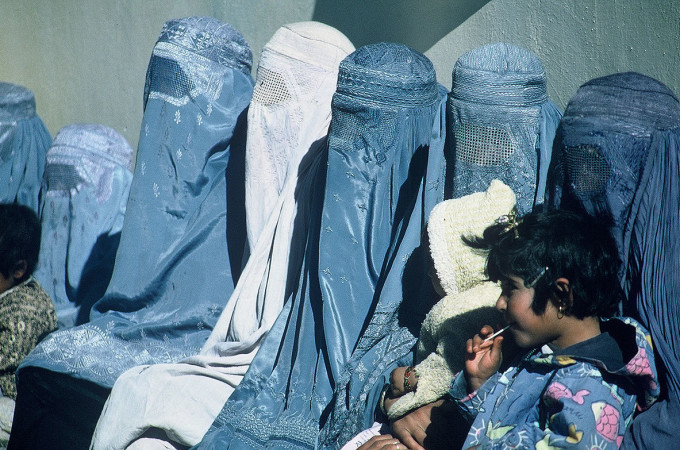
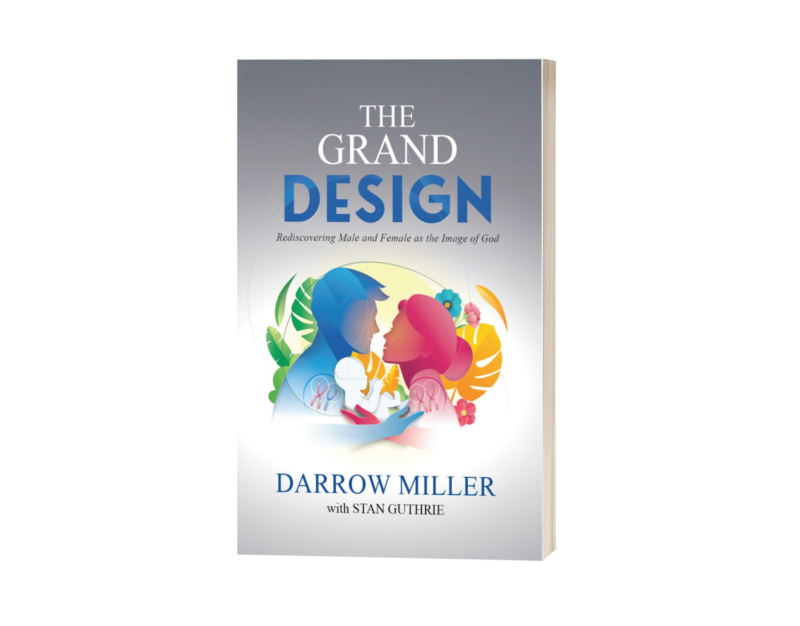

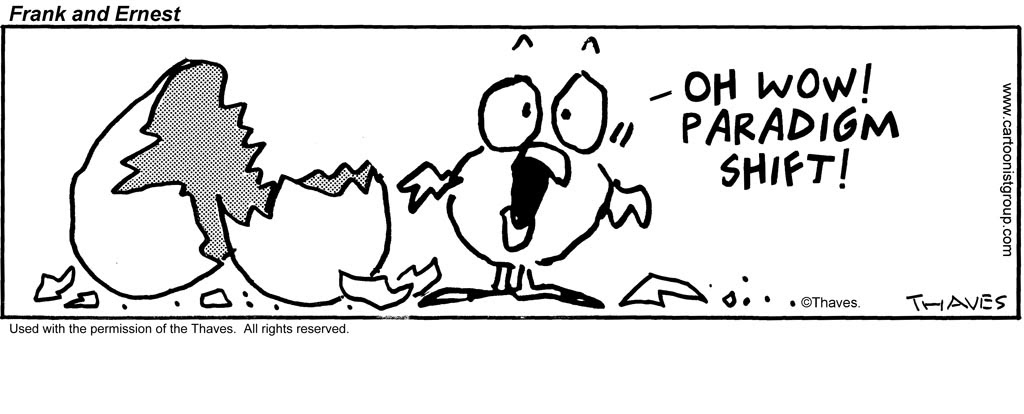

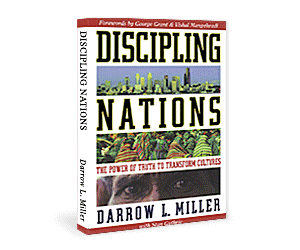
1 Comment
kudzai
October 7, 2016 - 12:40 pmThis is eye opening Darrow.